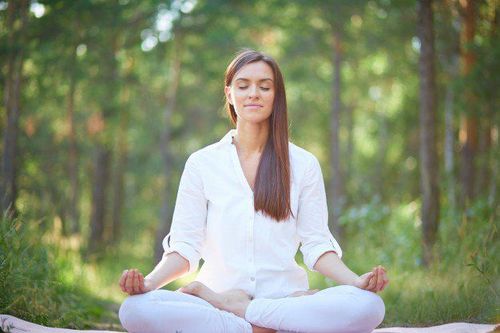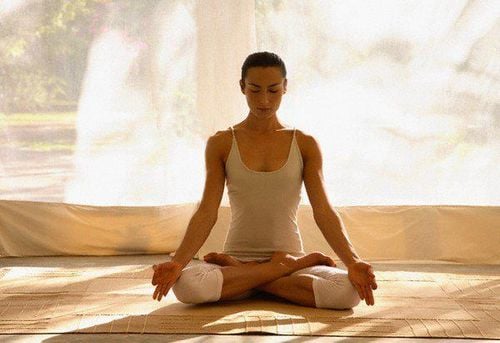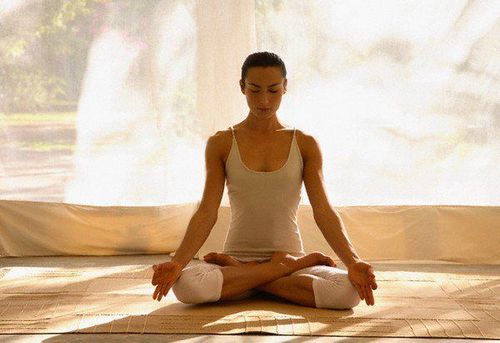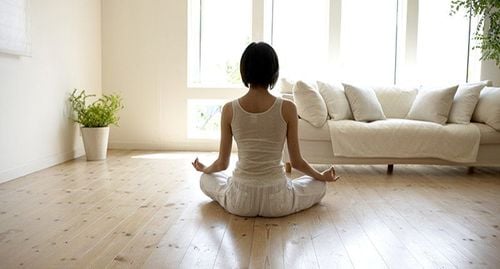This is an automatically translated article.
Millions of people around the world already enjoy the health benefits of mind-body interventions like yoga or meditation, but what they may not realize is that these benefits start at the fractional level. death and could change the way our genetic code works.1. What is Tai Chi?
Tai Chi (ergonomics) is the process of designing or arranging workplaces, products, and systems to suit the people who use them.Most people have heard of tai chi and think it has to do with seating or designing car controls and tools,... but it's much more than that. Tai Chi applies to the design of anything related to people workspaces, sports and recreation, health and safety.
Tai Chi (or 'human factor' as it is called in North America) is a branch of science that aims to learn about human abilities and limitations, and then apply this learning to improve human interaction with products, systems, and the environment.
Tai Chi aims to improve the work space and environment to reduce the risk of injury or harm. As technology changes, we also need to ensure that the tools we use for work, rest and play are designed with the requirements of our bodies in mind.
2. Why is Tai Chi so important?
Some studies suggest that low back pain is the most common work-related disability in the world affecting employees from offices, construction sites and in the highest-risk sector, agriculture. .Tai Chi aims to create safe, comfortable and productive workspace by bringing human capabilities and limitations into workspace design, including body size, strength , skill, speed, sensory ability (sight, hearing) and even attitude of the individual.
3. How important is Yoga Meditation?
Meditation is a process that results in a successful redirection of the mind and conviction that there is a truth higher and more satisfying than our minds and intelligences can conceive. Often people have to go to a dead end in their search for happiness and solutions in the spiritual and sensual realm to begin to meditate seriously.Meditation is not separate from life: It cannot be expected to work immediately. It is the pinnacle of a pure and safe life. It is best to let go of all expectations and keep yourself open and steady in your meditation practice.
Attempts to withdraw the senses and to calm the mind often lead to meditation. If you can't meditate yet, try to keep quiet, withdraw your senses, and focus your mind.
Success in meditation is seen in mental strength and calm in everyday life, not in experiencing miraculous spiritual phenomena.
Critical realization: Depending on the person, meditation can lead the person to a supreme being, in any form or name, as well as the belief or belief that there is truth or light beyond out of one's darkness or confusion. Helps yogis to connect wholeheartedly with safe and fulfilling divine love. Yoga meditation is useful for channeling emotional energy and bringing about the acceptance, humility, and self-compassion needed to balance a meditator's mental focus and will. Meditation cannot be just a technique, separate from love and devotion.

Tập thiền yoga giúp nâng cao sức mạnh tinh thần và sự bình tĩnh trong cuộc sống hàng ngày
4. How to meditate yoga
Just as there are many styles of yoga, so are many ways to meditate. The first stage of meditation is focusing on a specific object or establishing a point of focus, with the eyes open or closed. Silently repeating a word or phrase, reciting a prayer or chanting, visualizing an image such as a god, or focusing on an object such as a lit candle in front of you are all commonly recommended focus points. Observing or counting your breath and paying attention to bodily sensations are also optional focal points.4.1. Use sound
Yoga meditation uses the use of a specific sound, phrase, or affirmation as the focus. The word mantra comes from man, meaning "thinking" and looking, suggests "instrumental". Mantra is therefore an instrument of thought. It also means "protect the person who receives it." Traditionally, you can only get a spell from a teacher, someone who knows you and your specific needs. Just as contemplative prayers and affirmations need to be uttered with purpose and feeling, mantra meditation practice requires the conscious involvement of the meditator.Chanting, an extension of mantra yoga, is a powerful way to enter meditation. Longer than a mantra, a chant includes both rhythm and pitch. Western tradition uses hymns and hymns to invoke God's name, to inspire and induce spiritual awakening. Reflected in the universal interpretation of the word "one song" is the sound that germinates all other sounds.
Many beginners find using mantras in their meditation very effective and relatively easy. On the other hand, chanting can be intimidating for some people. If you feel awkward chanting yourself, use one of the many audiotapes of chanting on the market, or join a group meditation session where a Zen master guides the chant and practitioners repeat. back it. While chanting in Sanskrit can be very effective, reading a meaningful prayer or affirmation in any language can be just as effective.
4.2. The use of images
Visualization is also a good way to meditate yoga something that beginners often find easy to practice. Traditionally, a meditator visualizes his chosen deity a god or goddess in vivid and detailed fashion.Some students visualize a natural object such as a flower or the ocean; Others meditate on the chakras, or energy centers, in the body. In this type of meditation, you focus on the area or organ of the body that corresponds to a particular chakra, imagining the specific color associated with it.
4.3. Breath
Using the breath as the focus is another possibility. You can do this by actually counting your breaths as you do. However, in the end, meditating on the breath just means completely observing the breath as it is, without changing it in any way. In this case, the breath becomes the sole object of your meditation. You observe every nuance of the breath and every sensation it produces: the way it moves in your belly and torso, the sensation as it moves in and out of your nose, its quality, the temperature its, etc. Although you are fully aware of all these details, you do not dwell on them or judge them in any way; you remain detached from what you are observing. What you discover is neither good nor bad; You simply allow yourself to be with the breath from moment to moment.Observing the breath is a technique mainly used by practitioners commonly referred to as “vipassana” or “mindfulness” meditation.

Hơi thở trở thành đối tượng duy nhất của phương pháp thiền định tập trung vào hơi thở
5. Meditation posture
5.1. To sit
While you can meditate or fully concentrate on any activity or still pose, sitting is the most commonly recommended position. There are several classic sitting positions, but it is clear that the cross-legged pose is the most basic.Sitting on a chair also works. It is no less effective and certainly no less spiritual and it is often the best choice for beginners. The most important thing is that your spine remains upright and that you feel stable and comfortable, which are two essential qualities for performance. To maximize comfort on the floor, place a cushion or folded blanket under your butt to lift your butt and gently guide your knees toward the floor. This helps support the natural lumbar curve of the lower back.
Relax your arms and place your hands on your thighs or in your lap, with the palms in the relaxed position facing up or down. Roll your shoulders back and down and gently lift your chest. Keep your neck long and your chin slightly tilted down. Depending on the technique you are following, the eyes may be open or closed. Breathing is natural and free.
5.2. Go for a walk
A movement meditation that is recommended by many teachers may be an interesting option for you. The challenge of this form is to walk slowly and consciously, each step becoming your focal point. Destination, distance and speed are all random. Relax your arms at your sides and move freely, coordinating your breathing with your steps. For example, you can inhale for 3 steps and exhale for 3 steps. If feeling awkward or difficult, just breathe freely. While you can practice walking meditation anywhere, choose a setting where you especially enjoy the ocean, your favorite park, or grassland. Remember, getting somewhere doesn't matter. Rather, you are fully engaged in the act of walking that will become your meditation.5.3. Stand
Standing is another meditative practice that can be very powerful. It is often recommended to practitioners that it builds physical, mental, and spiritual strength. Stand with your feet shoulder-width apart. Soft knees; arms rest comfortably on either side. Check to see that the whole body is aligned in good posture: shoulders rolled back and down, chest open, neck long, head floating on top, and chin parallel to the floor. Open your eyes or close them slightly.5.4. Backrest
Although lying down is associated with relaxation is also used for meditation. Lie on your back, arms extended, palms facing up. Touch your heels together and let your feet fall apart, completely relaxed. Although your eyes may be open or closed, some people find it easier to stay awake with their eyes open. A supine meditation, although more physically rested than other poses, requires a higher level of alertness to maintain alertness and focus. Therefore, it may be more difficult for beginners to meditate in this position without falling asleep.Please dial HOTLINE for more information or register for an appointment HERE. Download MyVinmec app to make appointments faster and to manage your bookings easily.
Reference source: webmd.com












